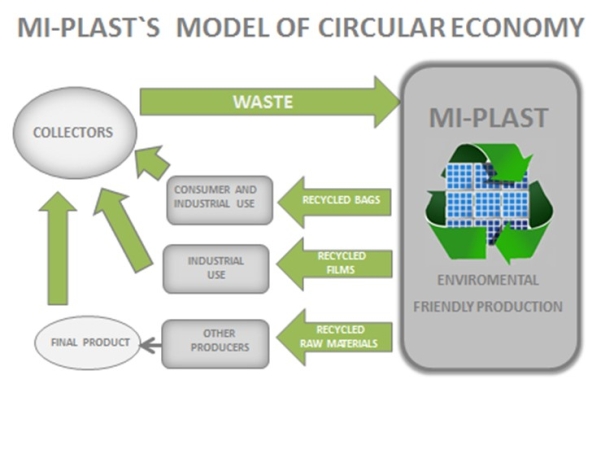Traditional plastics
 Classical plastics produced from fossil resources have their use in many areas of life. The basic characteristic of plastic products is their low mass in comparison to other materials' mass with relatively low density. Plastics show excellent thermal and electrical insulating properties and resistance to corrosion. They are formed in different shapes and can be mixed with other materials. Also, their properties can be easily modified and custom made by adding other components.
Classical plastics produced from fossil resources have their use in many areas of life. The basic characteristic of plastic products is their low mass in comparison to other materials' mass with relatively low density. Plastics show excellent thermal and electrical insulating properties and resistance to corrosion. They are formed in different shapes and can be mixed with other materials. Also, their properties can be easily modified and custom made by adding other components.
World's production of plastics has reached 280 million tons in 2011 and it has been constantly increasing at an average rate of 9% per year since the 1950s.
 Because of their versatility, plastics are used in almost every area of life. The most widespread applications include packaging, construction, transport, electric and electronic industry, agriculture, medicine etc. The fact that the application of plastics is almost unlimited and the properties adaptable to any requirement, is an answer to why plastics are a source of innovation in all areas of life. We have become so dependent on products that we use every day that we neglect the fact about their harmful impact on our health and the environment.
Because of their versatility, plastics are used in almost every area of life. The most widespread applications include packaging, construction, transport, electric and electronic industry, agriculture, medicine etc. The fact that the application of plastics is almost unlimited and the properties adaptable to any requirement, is an answer to why plastics are a source of innovation in all areas of life. We have become so dependent on products that we use every day that we neglect the fact about their harmful impact on our health and the environment.
Plastics represent a global ecological and environmental problem. It makes up to 90% of the ocean waste. The Pacific Ocean is the most polluted with 100 million tons of floating plastic waste. Plastic waste destroys ecosystems of the Ocean, defiles water supplies and causes death to hundreds of thousands birds and marine animals every year. Besides illegal dumps, organized disposal sites are also a big problem because it takes about a thousand years for plastics to decompose, while incineration creates hazardous atmospheric emission and toxic ashes. Due to this, more and more recycling drives are being opened and reduction of plastic products use is being promoted.







